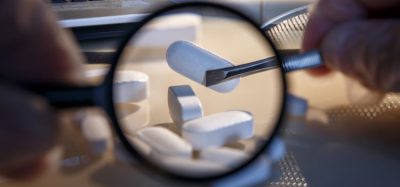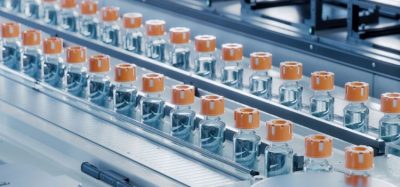ICH M7 Mutagenic impurities: A critical evaluation
Whereas the existing ICH quality documents covering impurities in new drug substances (ICH Q3A(R2)) and drug products (ICH Q3B (R2)) provide a framework for the qualification and control of most commonly encountered impurities and degradants, it is recognised that lower thresholds may be appropriate if the impurity is unusually toxic (e.g. DNA reactive). The emerging ICH M7 guidance seeks to provide a practical basis for the identification, characterisation, qualification and control of mutagenic impurities. Its role in the pantheon of guidance is therefore to supplement and complement the existing guidance enshrined in ICH M3(R2), ICH Q3A(R2), ICH Q3B(R2) and probably the emerging ICH Q3D document.
ICH M7 covers both the safety and quality frameworks for establishing acceptable limits that will assure negligible risk to patients. The guideline does not apply to advanced cancer indications (covered by ICH S9), where the drug is itself genotoxic or for established excipients and flavouring agents. Also exempted are certain biological products, including herbal medicines. Existing marketed products are also exempted, except where there are new mutagenic data for existing impurities; importantly structural alerts alone will not trigger regulatory concern. However, the guidance does cover proscribed changes to marketed products (new marketing applications and post-approval submissions).
ICH M7 introduces the concept of the staged TTC (Threshold of Toxicological Concern), which equates to a virtually safe dose (VSD), and which can be used during clinical development and during commercialisation. The total duration of exposure is a key factor impacting on the probability of any carcinogenic outcome. The ICH M7 recommended limits for daily intake of mutagenic impurities are 120, 20, 10 and <1.5µg/day, for <1 month, >1-12 months, >1- 10 years and >10 years to lifetime, respectively. A similar less than lifetime (LTL) exposure approach has been developed for multiple mutagenic impurities, where the total allowable limits are 120, 60, 10, <5µg/day, for <1 months, >1-12 months, >1- 10 years and >10 years to lifetime, respectively. The proposed 10µg/day limit for >1- 10 years can be increased three-fold for clinical development up to three years and similar approaches could be utilised (with justification) for marketed products. Higher exposure may be justifiable when exposure to a mutagenic impurity, e.g. formaldehyde, may be significantly greater from other sources, e.g. endogenous metabolism, food etc. This approach may also be justifiable in diseases with reduced life expectancy, limited therapeutic alternatives or chronic diseases with late onset. Certain structural classes, the so called ‘cohort of concern’, e.g. aflotoxin-like, N-nitroso or azoxy compounds are exempted from the TTC approach due to their high carcinogenicity potential.
An initial assessment is performed on the synthetic pathway to identify real or potential impurities that may be ‘reactive’; i.e. can react with DNA. Similarly, an assessment is performed on real or potential degradants (those that may be reasonably expected to form during long-term storage conditions) in drug substance or drug product. Reactive impurities or degradants (both real and potential) are then assessed for mutagenic potential using complimentary expert rule-based systems, e.g. DEREK and a statistical-based structural activity relationship (SAR) tool, e.g. Leadscope, CASEUltra that can predict bacterial mutagenicity based on structural alerts.
This output is then reviewed by experts to provide any supplementary understanding on the relevance of both positive and negative predictions and in the case of conflicting outcomes to understand those differences. Based on this output reactive impurities are categorised into five classes of decreasing concern. Class 1 are known mutagenic carcinogens, class 2 are known mutagens with unknown carcinogenic potential, class 3 show alerting structures (un-related to drug substance) with no supporting mutagenicity data, class 4 show alerting structures (related to drug substance which is itself non-mutagenic) and class 5 show no alerting structures.
Based on this underpinning risk assessment, a control strategy can be implemented. ICH M7 allows for four options to control mutagenic impurities, only one of which includes control of the mutagen on the API specification (option 1). Options 2 and 3 specify some levels of in-process control; whereas, option 4 is based on process understanding alone, i.e. quality by design approach.
ICH M7 has been welcomed by both industry and regulators as providing a suitable framework for controlling mutagenic impurities in drug substance and products.
References
ICH M7: Assessment and control of DNA reactive (mutagenic) impurities in pharmaceuticals to limit potential carcinogenic risk, current Step 3 version, 30 June 2013. http://www.ema.europa.eu/docs/en_GB/document_library/Scientific_guideline/2013/02/WC500139217.pdf. Accessed on 19th December 2013
ICH M3(R2): Nonclinical safety studies for the conduct of human clinical trials and marketing authorisation for pharmaceuticals, current Step 3 version, July 2008. http://www.ema.europa.eu/docs/en_GB/document_library/Scientific_guideline/2009/09/WC500002941.pdf. Accessed on 19th December 2013
ICH Q3A (R2): Impurities in new drug substances, current Step 4 version, 25 October2006. http://www.ich.org/fileadmin/Public_Web_Site/ICH_Products/Guidelines/Quality/Q3A_R2/Step4/Q3A_R2__Guideline.pdf. Accessed on 19th December 2013
ICH Q3B (R2): Impurities in new drug sproducts, current Step 5 version, June 2006. http://www.ema.europa.eu/docs/en_GB/document_library/Scientific_guideline/2009/09/WC500002676.pdf. Accessed on 19th December 2013
ICH Q3D: Guideline on elemental impurities, current Step 2b version, 26 July 2013. http://www.ich.org/fileadmin/Public_Web_Site/ICH_Products/Guidelines/Quality/Q3D/Q3D_Step2b.pdf. Accessed on 19th December 2013
ICH S9: Clinical evaluation for anticancer pharmaceuticals, current Step 5 version, May 2010. http://www.ema.europa.eu/docs/en_GB/document_library/Scientific_guideline/2010/01/WC500043471.pdf. Accessed on 19th December 2013







